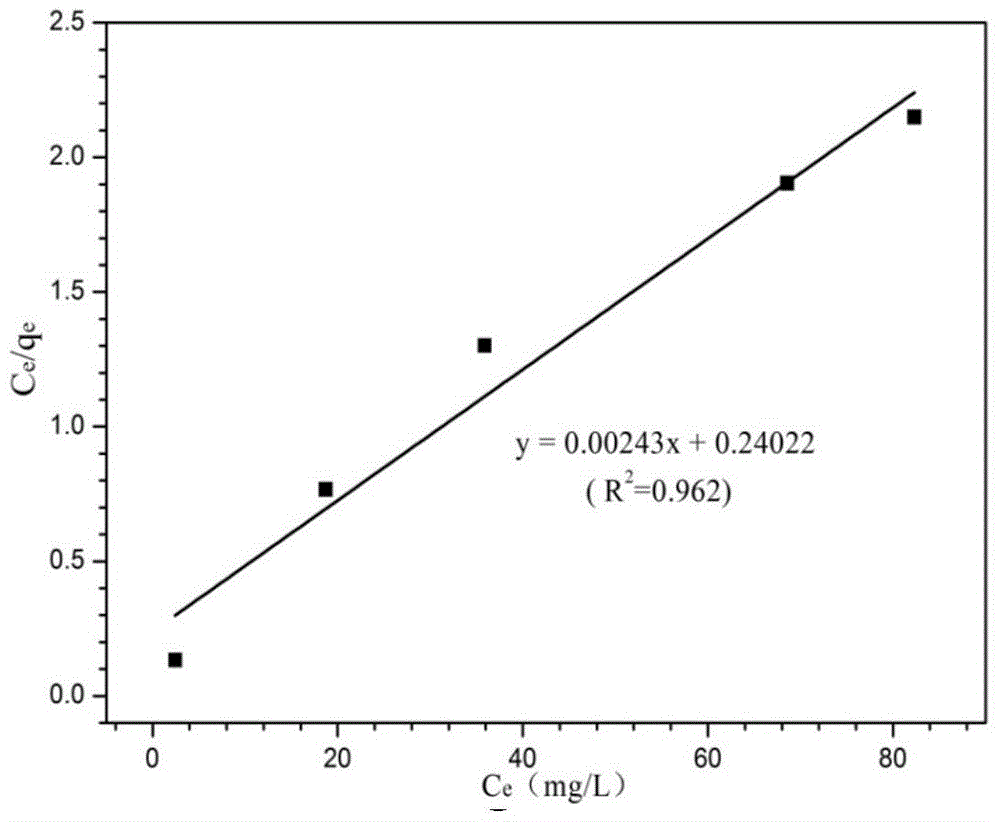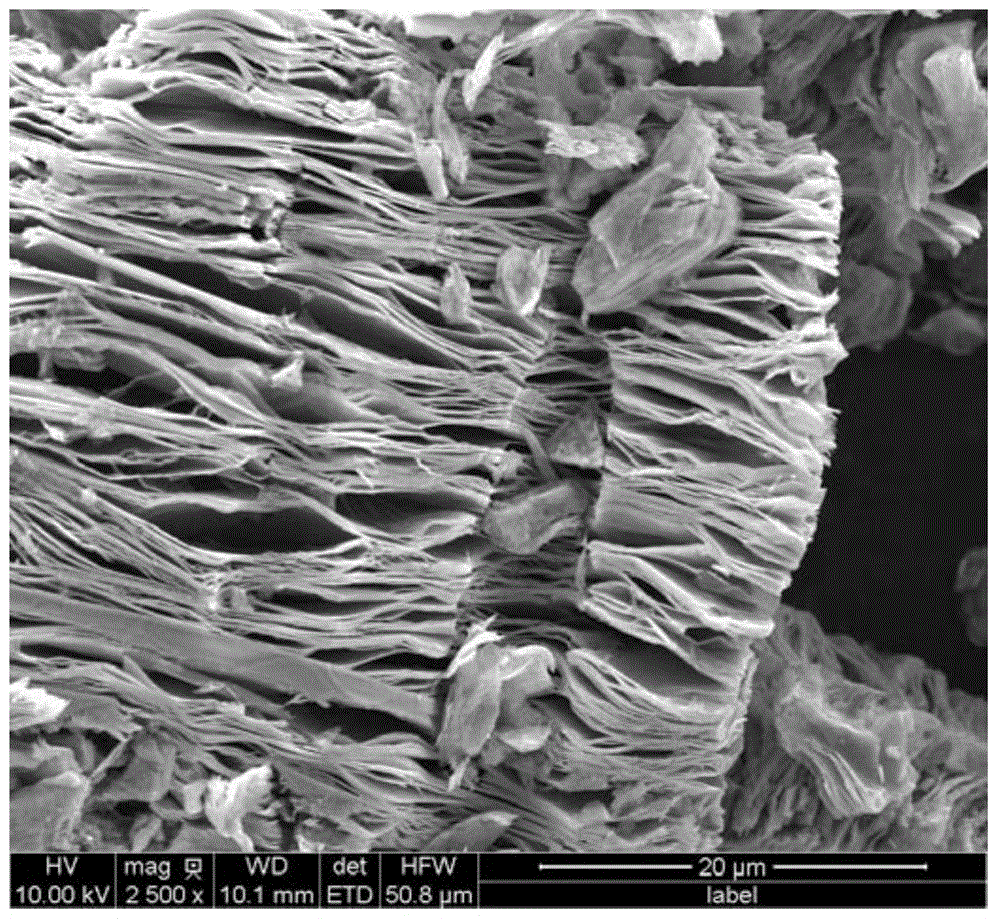Application of two-dimensional transitional metal carbide nanosheet as radionuclide adsorbent
A technology of transition metals and radionuclides, which is applied in the field of two-dimensional transition metal carbides as radionuclide adsorbents, can solve problems such as potential safety hazards and waste of nuclear fuel, and achieve enhanced adsorption capacity, high adsorption capacity, and enhanced selection. Adsorptive effect
- Summary
- Abstract
- Description
- Claims
- Application Information
AI Technical Summary
Benefits of technology
Problems solved by technology
Method used
Image
Examples
Embodiment 1
[0031] In this embodiment, the MXene material is multilayer Ti 3 C 2 T x (T=F, OH, the same below), and its preparation method is as described in the literature [M.Naguib, etal., Adv.Mater., 2011, 23, 4248]. The multilayer Ti 3 C 2 T x The scanning electron microscope photo as figure 1 shown.
[0032] To test the adsorption performance of the MXene material on Th(IV), the specific steps are as follows:
[0033] (1) with Th(NO 3 ) 4 As a Th(IV) source, dissolve it in ultrapure water to prepare standard solutions of about 20, 40, 60, 100, and 120 mg / L Th(IV) respectively;
[0034] (2) Use a 5ml pipette gun to measure about 10mL of the above standard solution into small glass bottles, numbered 1~5#, and add about 0.01gTi to each bottle 3 C 2 T x As an adsorbent (the amount of adsorbent input is 1g / L), add small magnets;
[0035] (3) adjust each solution pH=3.38~3.42, use plastic wrap to seal bottle mouth, prevent solution from evaporating, open magnetic stirrer, make...
Embodiment 2
[0045] In this example, the MXene material is exactly the same as the material in Example 1, both of which are multilayer Ti 3 C 2 T x (T=F,OH). The multilayer Ti 3 C 2 T x The preparation method is exactly the same as the preparation method in Example 1, and the scanning electron micrograph is as follows figure 1 shown.
[0046] Test the MXene material against U(VI) (in UO 2 2+ Exist in the form), the specific steps are as follows:
[0047] (1) with UO 2 (NO 3 ) 2 As a source of U(VI), dissolve it in ultrapure water to prepare standard solutions of about 20, 40, 60, 80, and 100mg / LU(VI);
[0048] (2) Use a 5ml pipette gun to measure about 10mL of the above standard solution into small glass bottles, numbered 1~5#, and add about 0.01gTi to each bottle 3 C 2 T x As an adsorbent (the amount of adsorbent input is 1g / L), add small magnets;
[0049] (3) adjust the pH of each solution=5.48~5.52, use plastic wrap to seal the bottle mouth, prevent the solution from eva...
Embodiment 3
[0059] In this embodiment, the MXene material is a multilayer V 2 CT x , and its preparation method is as described in the literature [M.Naguib, et al., J.Am.Chem.Soc., 2013, 135, 15966]. The multilayer Ti 3 C 2 T x The scanning electron microscope photo as image 3 shown.
[0060] To test the adsorption performance of the MXene material to U(VI), the specific steps are as follows:
[0061] (1) with UO 2 (NO 3 ) 2 As a source of U(VI), dissolve it in ultrapure water to prepare a standard solution of about 100mg / LU(VI);
[0062] (2) Use a 5ml pipette gun to measure about 10mL of the above standard solution into 5 small glass bottles, numbered 1~5#, and add about 4mgV 2 CT x As an adsorbent (the amount of adsorbent input is 0.4g / L), add small magnets;
[0063] (3) Adjust the pH of 1~5# solution to 2, 3, 4, 5, 6 respectively, seal the bottle mouth with plastic wrap to prevent the solution from evaporating, turn on the magnetic stirrer, and make the adsorbent fully con...
PUM
 Login to View More
Login to View More Abstract
Description
Claims
Application Information
 Login to View More
Login to View More - R&D
- Intellectual Property
- Life Sciences
- Materials
- Tech Scout
- Unparalleled Data Quality
- Higher Quality Content
- 60% Fewer Hallucinations
Browse by: Latest US Patents, China's latest patents, Technical Efficacy Thesaurus, Application Domain, Technology Topic, Popular Technical Reports.
© 2025 PatSnap. All rights reserved.Legal|Privacy policy|Modern Slavery Act Transparency Statement|Sitemap|About US| Contact US: help@patsnap.com



